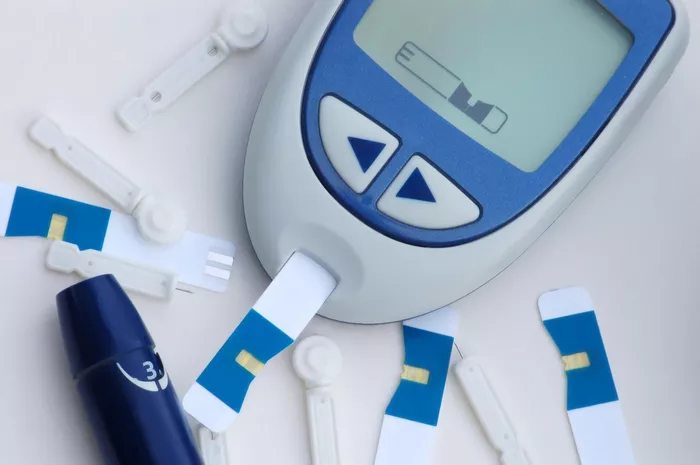The A1C test, also known as the glycated hemoglobin test or HbA1c test, is one of the most important tools in diabetes diagnosis and management. It provides a long-term average of blood glucose levels over the past two to three months, making it a reliable indicator of overall blood sugar control. For people with diabetes or those at risk, understanding what constitutes a normal A1C test result is crucial for maintaining good health and preventing complications.
What Is the A1C Test?
The A1C test measures the percentage of hemoglobin in the blood that is coated with glucose (glycated hemoglobin). Hemoglobin is a protein in red blood cells responsible for carrying oxygen. When glucose in the bloodstream attaches to hemoglobin, it forms glycated hemoglobin. The more glucose in the blood, the higher the percentage of glycated hemoglobin. Since red blood cells have an average lifespan of about 120 days, the A1C test reflects an individual’s average blood sugar levels over the past two to three months.
Unlike daily blood glucose monitoring, which provides a snapshot of blood sugar levels at a particular moment, the A1C test offers a broader view of glucose control. This makes it an invaluable test for diagnosing diabetes and monitoring long-term glucose management.
What Is a Normal A1C Test Result?
A normal A1C level varies depending on individual health status, medical history, and risk factors for diabetes. However, the general classifications for A1C results are as follows:
- Normal: Below 5.7%
- Prediabetes: 5.7% to 6.4%
- Diabetes: 6.5% or higher
For individuals without diabetes, an A1C level below 5.7% is considered normal. This suggests that blood sugar levels are well-regulated and that there is minimal risk of developing diabetes. However, A1C levels can be influenced by various factors, including age, ethnicity, and underlying medical conditions.
A1C Test Results and Their Implications
1. Normal A1C (Below 5.7%)
An A1C level below 5.7% indicates that blood sugar levels are within a healthy range, and the risk of developing diabetes is low. However, maintaining this level requires a balanced diet, regular physical activity, and a healthy lifestyle.
How to Maintain a Normal A1C:
- Eating a well-balanced diet rich in whole grains, lean proteins, healthy fats, and fiber.
- Engaging in at least 150 minutes of moderate-intensity exercise per week.
- Avoiding excessive sugar intake and processed foods.
- Managing stress and getting adequate sleep.
2. Prediabetes (5.7% to 6.4%)
An A1C level in the range of 5.7% to 6.4% indicates prediabetes, meaning blood sugar levels are higher than normal but not yet high enough to be classified as diabetes. This is a warning sign that the body is becoming resistant to insulin or that insulin production is insufficient.
Implications of Prediabetes:
- Increased risk of developing type 2 diabetes, heart disease, and stroke.
- Potential for reversing or delaying diabetes with lifestyle changes.
- Need for regular monitoring and early intervention.
Preventing Progression to Diabetes:
- Implementing a structured weight loss program (losing 5-10% of body weight significantly reduces diabetes risk).
- Exercising regularly to improve insulin sensitivity.
- Monitoring carbohydrate intake and choosing low-glycemic foods.
- Avoiding sugary beverages and high-calorie processed foods.
3. Diabetes (6.5% or Higher)
An A1C level of 6.5% or higher is diagnostic of diabetes. This means that blood sugar levels have been consistently high over the past few months, and medical intervention is necessary.
Implications of a High A1C:
- Increased risk of diabetes-related complications, including nerve damage (neuropathy), kidney disease (nephropathy), and eye disease (retinopathy).
- Need for medication or insulin therapy depending on severity.
- Importance of regular monitoring and adherence to treatment plans.
Managing Diabetes to Lower A1C:
- Adhering to a diabetes-friendly diet with controlled carbohydrate intake.
- Taking prescribed medications as directed.
- Monitoring blood glucose levels regularly.
- Engaging in consistent physical activity.
- Working with a healthcare provider to adjust treatment plans as needed.
Factors That Can Affect A1C Results
Several factors can influence A1C levels and cause variations in test results, including:
1. Anemia and Hemoglobin Variants
Certain blood disorders, such as anemia or hemoglobinopathies (e.g., sickle cell disease), can affect A1C readings. People with these conditions may need alternative glucose monitoring methods, such as fructosamine tests.
2. Recent Blood Transfusions or Heavy Bleeding
Blood loss or transfusions can temporarily alter A1C levels by introducing new red blood cells that have not been glycated.
3. Kidney and Liver Diseases
Chronic kidney or liver disease can affect red blood cell turnover and distort A1C test results.
4. Pregnancy
Pregnant women, especially those with gestational diabetes, may experience fluctuating A1C levels. In such cases, blood glucose testing is often preferred over A1C monitoring.
How Often Should You Get an A1C Test?
The frequency of A1C testing depends on individual health conditions:
For people without diabetes: Once every 3 years if risk factors exist.
For individuals with prediabetes: At least once a year to monitor changes.
For individuals with diabetes: Every 3 to 6 months, depending on blood sugar control and treatment adjustments.
The Importance of Keeping A1C in a Healthy Range
Maintaining a healthy A1C level is crucial for overall well-being and long-term health. A high A1C is associated with an increased risk of diabetes complications, while a well-controlled A1C reduces the likelihood of heart disease, kidney failure, and nerve damage.
Benefits of Lowering A1C:
- Reduced risk of cardiovascular disease.
- Lower chances of kidney disease and dialysis.
- Better nerve health and reduced risk of diabetic neuropathy.
- Improved overall energy levels and well-being.
Conclusion
Understanding normal A1C test results is essential for diagnosing, managing, and preventing diabetes. A normal A1C level is below 5.7%, while an A1C of 5.7% to 6.4% indicates prediabetes, and 6.5% or higher confirms diabetes. Regular monitoring, lifestyle modifications, and proper medical care can help individuals maintain healthy blood glucose levels and prevent complications.
For those with prediabetes or diabetes, working closely with healthcare professionals, including endocrinologists, dietitians, and diabetes educators, is crucial in managing A1C levels effectively. By staying proactive with diet, exercise, and medication management, individuals can improve their health and quality of life while reducing the risks associated with high blood sugar levels.
Related topics:
What are the Risks with Gestational Diabetes?


























